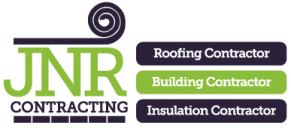Storm damage, as it pertains to roofs, is a widespread issue that many homeowners face, particularly in areas prone to severe weather conditions.
It can manifest in various forms, ranging from missing shingles to structural weaknesses that threaten the entire building.
Understanding the potential consequences of storm damage is paramount, as it can lead to leaks, mould growth, and in extreme cases, complete roof failure.
In this regard, the importance of prevention and recovery cannot be overstated, as these measures can save both time and money in the long run.
This guide aims to provide comprehensive insights into how to prevent, detect, and recover from storm damage to your roof, ensuring that your home remains safe and secure.
At JNR Projects, we are experts on roof repairs and dealing with all sorts of damage that can occur during a storm.
The Different Types of Storm Damage
Wind damage can cause shingles to lift, crack, or even blow away, leaving the roof’s underlayment exposed to further weathering.
Rain and water damage can lead to leaks and the gradual degradation of roof materials, while hail can cause dents and cracks in shingles. Snow and ice can add significant weight to the roof, risking structural failure.
The cumulative effect of multiple storm types can lead to a compound problem, where different forms of damage exacerbate each other, making detection and repair all the more critical.
Recognising these various forms of storm damage helps homeowners take appropriate preventive measures and respond effectively when damage occurs.
Prevention Tips
Regular roof inspections are a cornerstone of prevention. This includes hiring a professional for a thorough examination or conducting DIY inspections by looking for signs of wear and tear.
Either way, early detection of potential problems can prevent minor issues from becoming significant, costly repairs.
Proper maintenance of gutters and drainage systems ensures that water flows away from the roof, minimising the risk of leaks. Reinforcing vulnerable areas such as shingles, flashing, and other weak points, and investing in quality materials, can make your roof more resistant to storms.
Tree maintenance and mitigating other external risk factors further bolster the roof’s ability to withstand harsh weather conditions.
Detection and Assessment of Damage
After a storm, homeowners must be diligent in identifying visible signs of damage, such as missing or damaged shingles, leaks, or bent flashing.
Assessing the structural integrity is vital, as hidden damage can lead to long-term problems.
Calling a professional may be necessary if the damage is extensive or hard to assess. Temporary measures like covering exposed areas with a tarp can prevent further damage while waiting for repairs.
Documenting all damage is essential, especially for insurance purposes, as it can help ease the claim process and ensure that you receive the compensation you deserve.
Recovery Tips
DIY repairs might be suitable for minor damages like replacing a few shingles or sealing small leaks. Temporary fixes can be vital in an emergency, but long-term solutions must be pursued to maintain the roof’s integrity.
Hiring a professional roofing contractor becomes crucial for extensive repairs. Finding a reputable contractor involves understanding quotes, and costs, and ensuring proper certifications and insurance are in place.
Navigating insurance claims can be a complex process, but understanding your policy and working closely with your insurance company can facilitate a smoother recovery. Long-term maintenance and continued vigilance in monitoring your roof’s condition are essential in preventing future storm damage.
Conclusion
Storm damage to your roof is a serious issue that requires a multifaceted approach, encompassing prevention, detection, and recovery.
Being proactive in regular inspections, maintenance, and reinforcing vulnerable areas can go a long way in mitigating potential damage.
Once damage occurs, prompt assessment and repair, whether DIY or through a professional contractor, is vital to restore your roof to its optimal condition.
By adhering to the tips and guidance provided in this guide, homeowners can ensure that their roofs are well-prepared for storms and resilient in recovery.
Taking these measures is not only an investment in your home but also in your peace of mind, knowing that you have done everything possible to protect one of your most valuable assets.
Get in touch with us today if you are in need of a roof repair.
